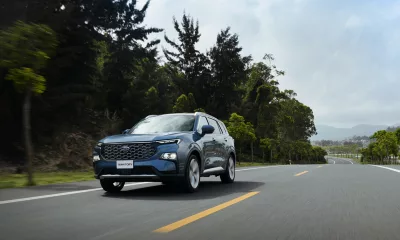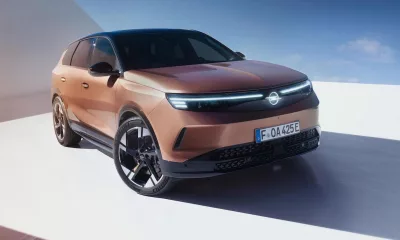The AMV8 Vantage, the car that is expected to become Aston Martin’s biggest seller in the history of the brand, has grabbed headlines at the Detroit Motor Show.
The AMV8 Vantage, the car that is expected to become Aston Martin’s biggest seller in the history of the brand, has grabbed headlines at the Detroit Motor Show.
Premier Automotive Group executives hope that by showing it at Detroit, the R860 000 Aston Martin will generate interest among wealthy young professionals in America. It will cost approximately R400 000 less than Aston Martin’s current entry-level DB7 coupé.
Aston Martin boss, former BMW and Porsche executive Ulrich Bez, said the car goes into production at the end of this year. It will use technology from the Vanquish. The two-seat AMV8 Vantage will be powered by a 4,3-litre, alloy V-8.
CARtoday.com reported last year that the rear wheel-drive car will feature a lightweight aluminium body with alloy and composite-fibre chassis sections and a sequential-shift semi-automatic gearbox controlled by steering wheel-mounted paddles.
This transmission may be a rear-mounted transaxle unit rather than being bolted to the engine, to give optimal weight distribution.
In fact, Aston Martin claims a 50-50 front-rear weight ratio for the car.
The design of the AMV8 Vantage was overseen by Henrik Fisker, whom Aston Martin hired away from BMW after Fisker’s work on the Z8 roadster.
Although Fisker wanted to create a vehicle that broke the typical Aston Martin design mould, he incorporated several Aston Martin cues, such as the grille and front quarter-panel openings seen in recent vehicles.
“The AMV8 Vantage features many of the design cues that have become the basic DNA for all Aston Martin models,” Fisker said.
“It was important to ensure that the car’s design was pure, clean and modern. At the same time, you should be able to put your hand over the front nose badge and still recognize the car as an Aston Martin,” he added.
The AMV8 Vantage will be manufactured at Aston’s new plant in Gaydon. The company is aiming to build 3 500 to 5 000 cars annually over the next five years, and up to half of this volume will be accounted for by the new model.









